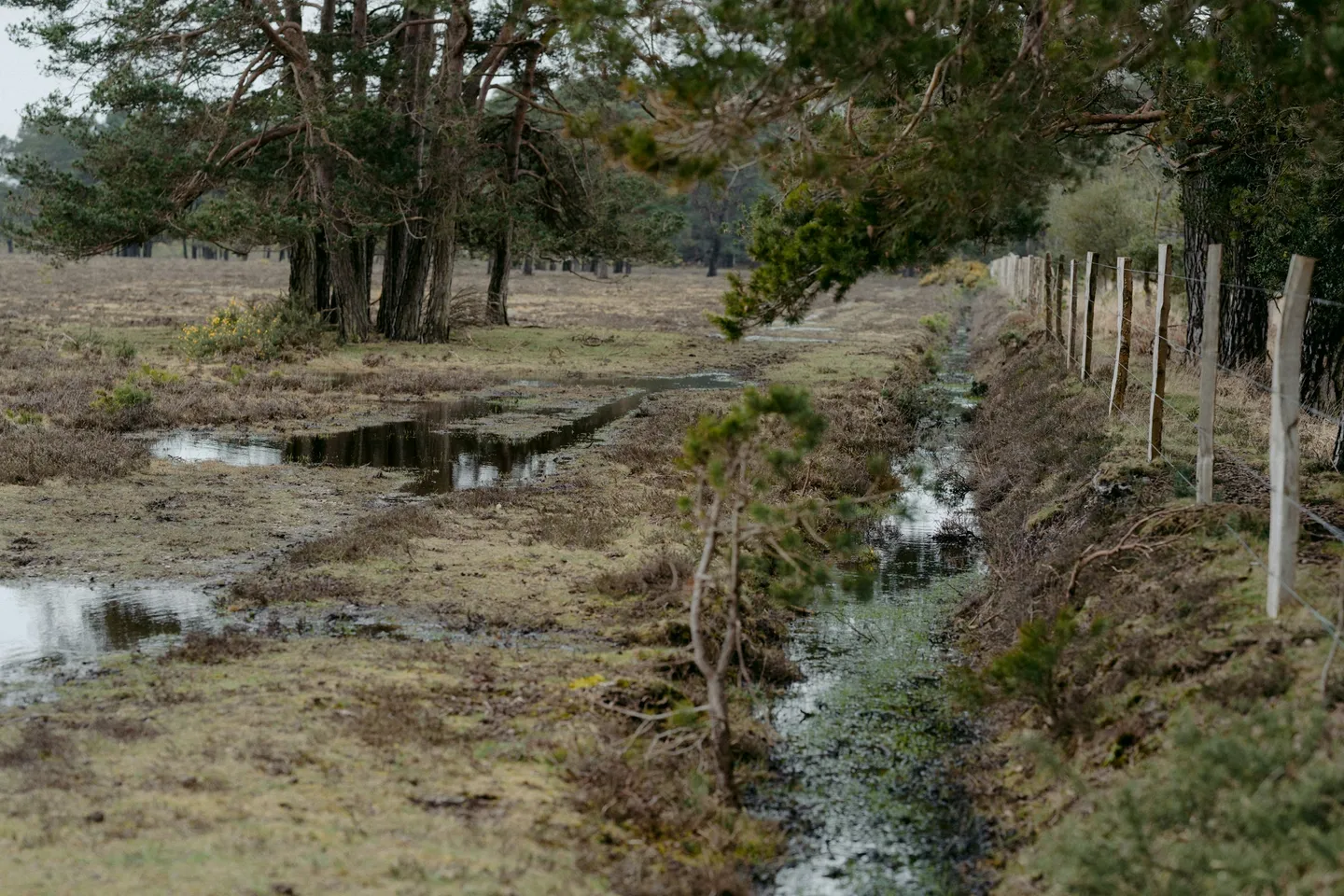Septic Systems in the UK: Installation, Maintenance & Troubleshooting

Photo by Annie Spratt on Unsplash
Since January 2020, UK septic tank regulations have undergone fundamental changes that affect approximately 1.3 million properties across rural Britain. The Environment Agency’s prohibition on direct discharge to watercourses represents the most significant regulatory change in decades, requiring thousands of property owners to invest between £4,000 and £20,000 in system upgrades.
This transformation extends beyond simple compliance. Modern septic technology now offers shallow-dig plastic systems that cost 75% less than traditional installations, while bio-treatment plants actively improve water quality before discharge. The regulatory framework has created opportunities for innovation, though 60% of existing systems may not fully comply with current standards.
Current Legal Framework
The General Binding Rules, implemented in 2015 and substantially updated in 2020 and 2023, govern all private sewage systems in England. Properties with septic tanks discharging to surface water had to upgrade by 1 January 2020, while those selling properties with non-compliant systems must complete upgrades before sale completion. The rules distinguish between pre-2015 installations, which benefit from limited grandfathering provisions, and newer systems that face stricter requirements including mandatory public sewer connection if within 30 metres.
Building Regulations Part H establishes technical standards requiring minimum 2,700-litre capacity for four users, positioning at least 7 metres from habitable buildings, and compliance with BS EN 12566-1 standards. Drainage fields must achieve percolation test results between 15-100 seconds per millimetre, with field sizing calculated using the formula: Area = people × percolation value × 0.25 square metres.
Regional variations add complexity. Scotland requires mandatory registration through SEPA, Wales through Natural Resources Wales, and Northern Ireland operates under separate DAERA requirements. These differences particularly affect property transactions, as compliance verification requirements vary significantly between jurisdictions.
Property owners face substantial legal obligations beyond initial installation. The Environment Agency requires annual emptying by registered waste carriers, maintenance of detailed records for seven years, and monthly monitoring for compliance. Violations can result in fines up to £150,000 for serious pollution incidents, with criminal prosecution possible for repeated offences.
Installation Economics and Options
Professional installation costs vary dramatically across the UK, with complete systems ranging from £12,000 to £20,000. London and South East installations command 20-30% premiums above national averages due to higher labour costs and limited contractor availability. Rural areas face additional transport charges that can add £1,000-£3,000, while Northern regions typically benefit from costs 15-25% below average.
The rise of DIY installation kits has revolutionized cost structures, enabling total system costs as low as £4,000-£6,000. These shallow-dig systems work particularly well in clay soils common throughout rural UK areas, requiring only 600mm excavation depth compared to traditional 2-3 metre requirements. Professional labour for DIY kit installation typically costs £500-£1,000, representing savings of £7,500-£15,500 compared to full professional installation.
Material selection significantly impacts both initial investment and long-term performance. Plastic HDPE systems dominate 60% of new installations due to their £2,000-£5,000 cost range and 25-30 year lifespan. Fibreglass alternatives at £3,000-£7,000 offer enhanced durability extending to 30-50 years, while concrete tanks costing £5,000-£10,000 provide maximum longevity exceeding 50 years but require heavy machinery for installation.
Package treatment plants present solutions for challenging sites where traditional drainage fields fail. Costing £5,000-£12,000 initially plus £1,250-£2,000 annually in operating costs, these systems produce effluent meeting EN 12566-3 standards suitable for watercourse discharge. The Ecoflo biofilter system represents emerging eco-friendly technology, using renewable coconut husk medium without electricity while meeting certification standards.
Site Assessment and Percolation Testing
Percolation testing determines soil suitability and remains the critical factor in system selection and sizing. The methodology specified in BS 6297:2007 requires test holes 300mm square and 300mm deep, filled with water and allowed to drain overnight before recording percolation rates. Values below 15 seconds per millimetre indicate contamination risk from inadequate treatment time, while values above 100 suggest system backup potential from poor drainage.
Professional site assessment costs £300-£500 but prevents costly mistakes. Assessors evaluate not only soil conditions but also groundwater levels, proximity to water sources, and available space for both primary systems and future replacement fields. Clay soils prevalent across central England often require specialized solutions like drainage crates offering 95% void ratios or mound systems that create raised drainage areas above natural soil level.
Contractor selection requires verification of proper certifications beyond basic trade qualifications. British Water accreditation demonstrates specialized wastewater system competence, while Environment Agency waste carrier registration ensures legal compliance for waste handling. NAPIT electrical certification becomes essential for treatment plant installations requiring power connections, as improper electrical work can void both system warranties and buildings insurance coverage.
Maintenance Obligations and Costs
UK law mandates professional maintenance by licensed contractors, making DIY emptying illegal since January 2020. Annual emptying represents the minimum requirement, though actual frequency depends on usage patterns and tank capacity. Professional emptying costs range from £150-£450 nationally, with regional variations reflecting local economic conditions. South East and London areas command £450-£700 for standard services, while rural Wales ranges £200-£400.
Beyond emptying, comprehensive maintenance includes annual inspections costing £100-£300 that evaluate structural integrity, component function, and regulatory compliance. Treatment plants require specialized servicing costing £750-£1,000 annually, including electrical system checks, pump maintenance, and performance verification against discharge consent requirements.
Documentation requirements extend beyond simple service records. Property owners must maintain detailed logs for seven years including emptying certificates with waste transfer notes, inspection reports identifying developing issues, and repair documentation proving proper maintenance. These records prove essential for insurance claims processing, as maintenance neglect can void coverage entirely.
UK-approved biological additives like Muck Munchers can reduce organic waste by up to 97% through enhanced bacterial activity. Monthly treatments costing £10-£20 help maintain healthy tank ecosystems, though experts debate their necessity in properly functioning systems. Harsh chemicals, acids, and excessive anti-bacterial products remain specifically discouraged as they damage beneficial bacteria essential for waste breakdown.
Seasonal Challenges and Winter Preparation
UK climate conditions create distinct seasonal challenges requiring proactive management. Winter freezing affects exposed pipes and reduces bacterial activity below 12°C, potentially causing complete system failure. Properties in Scotland and Northern England face particular risk, with frozen systems requiring emergency thawing that can cost £500-£1,500.
Winter preparation should begin in October, including insulation over tank areas using straw bales or specialized covers, ensuring consistent water flow through daily usage patterns, and pre-winter emptying for vulnerable installations. Spring inspections check for freeze damage including cracked pipes or tank walls, while assessing drainage field recovery from winter saturation that can reduce absorption capacity by 40%.
Summer brings different challenges as increased usage from guests and garden activities can overwhelm systems designed for normal occupancy. Holiday properties face particular stress from sudden usage spikes followed by dormant periods that disrupt bacterial balance. Drought conditions concentrate waste products and reduce soil absorption capability, potentially triggering temporary system failures even in properly maintained installations.
Problem Diagnosis and Emergency Response
Drainage field failure represents the most common problem, affecting systems across all ages due to inevitable biomat buildup. Early warning signs include foul odours indicating anaerobic conditions, slow drainage progressing through multiple fixtures, and unusually lush grass growth over drainage areas signaling nutrient leakage. Professional diagnostic services cost £250-£300 for standard inspections, with CCTV surveys adding £150-£200.
Emergency situations require immediate response to prevent environmental contamination and health hazards. Property owners should stop all water usage, clear access for emergency vehicles, and contact the Environment Agency Incident Line (0800 80 70 60) for pollution incidents. Professional emergency services typically charge 50-100% premiums above standard rates but provide essential rapid response when systems threaten public health.
Common failure mechanisms stem from predictable causes. Clay soils prevalent across rural areas accelerate soakaway failure through reduced permeability over time. Tree root intrusion damages both tanks and pipework, with willow and poplar trees particularly problematic within 30 metres of systems. Poor maintenance practices, especially irregular emptying and chemical damage, compound natural system stress leading to premature failure.
Repair costs vary significantly based on problem severity. Baffle replacement ranges £180-£750, pump replacement costs £350-£1,000, while pipe repairs typically cost £500-£2,000. Complete drainage field replacement at £5,000-£15,000 often makes total system replacement more economical, particularly for installations exceeding 20 years old.
Insurance Coverage and Claims
Buildings insurance typically covers accidental damage to septic systems under “underground services” provisions. Coverage generally includes tree root damage, ground movement effects, and vehicle impact damage. However, policies specifically exclude damage from poor maintenance, making detailed service records essential for successful claims.
Insurance claims require professional assessment documenting damage cause and extent, detailed maintenance records proving proper care, and prompt reporting to prevent escalation. Successful claims typically cover 60-80% of repair costs after excess deduction, though insurers increasingly scrutinize maintenance history before approving payments.
System Selection for UK Conditions
Traditional septic tanks with drainage fields remain the most cost-effective solution for properties with adequate land and suitable soil conditions. Modern plastic HDPE systems offer optimal balance between £4,000-£6,000 installation costs and 25-30 year lifespans, particularly in stable soil conditions without high water tables.
Package treatment plants overcome soil limitations by producing higher quality effluent suitable for watercourse discharge. Installation costs of £5,000-£12,000 plus ongoing operating expenses prove economical where drainage fields would require extensive earthworks or where space constraints prevent traditional soakaway installation. These systems particularly suit clay soil areas throughout central England where percolation rates exceed acceptable limits.
Cesspools function as simple holding tanks without treatment capability, requiring emptying every 4-6 weeks at annual costs of £2,000-£3,600. Despite lower installation costs, ongoing expenses make cesspools suitable only where soil conditions absolutely prevent drainage field installation and no watercourse discharge options exist.
Modern eco-friendly alternatives increasingly appeal to environmentally conscious property owners. Non-electric treatment systems using renewable filter media offer reduced environmental impact with lower operating costs, though initial investment typically exceeds conventional options by 15-25%. These technologies demonstrate particular value in off-grid properties pursuing comprehensive sustainability approaches.
Future-Proofing Against Regulatory Changes
The 2020 regulatory changes affected thousands of properties, forcing expensive upgrades with limited transition periods. Properties installing systems today should anticipate further tightening of environmental standards, particularly regarding nutrient reduction and climate change adaptation. Treatment plants meeting current EN 12566-3 standards provide greatest flexibility for changing discharge requirements, while eco-friendly systems demonstrate environmental responsibility increasingly valued in rural property markets.
Upgrade pathways for existing systems depend on current infrastructure condition and site constraints. Properties with functioning tanks can add drainage fields for £3,000-£8,000 to achieve compliance, while conversion units at £2,999 provide secondary treatment while retaining existing tanks. Complete replacement with modern systems costs £8,000-£20,000 but offers 25+ year operational life with reduced maintenance requirements.
The transformation of UK septic system regulation has created both challenges and opportunities for rural property owners. Understanding current requirements, available technologies, and maintenance obligations enables informed decisions that protect property values while contributing to environmental protection. Professional expertise has become essential for navigating complex regulations, but modern technology offers unprecedented choice in balancing cost, performance, and environmental impact for sustainable rural living.
